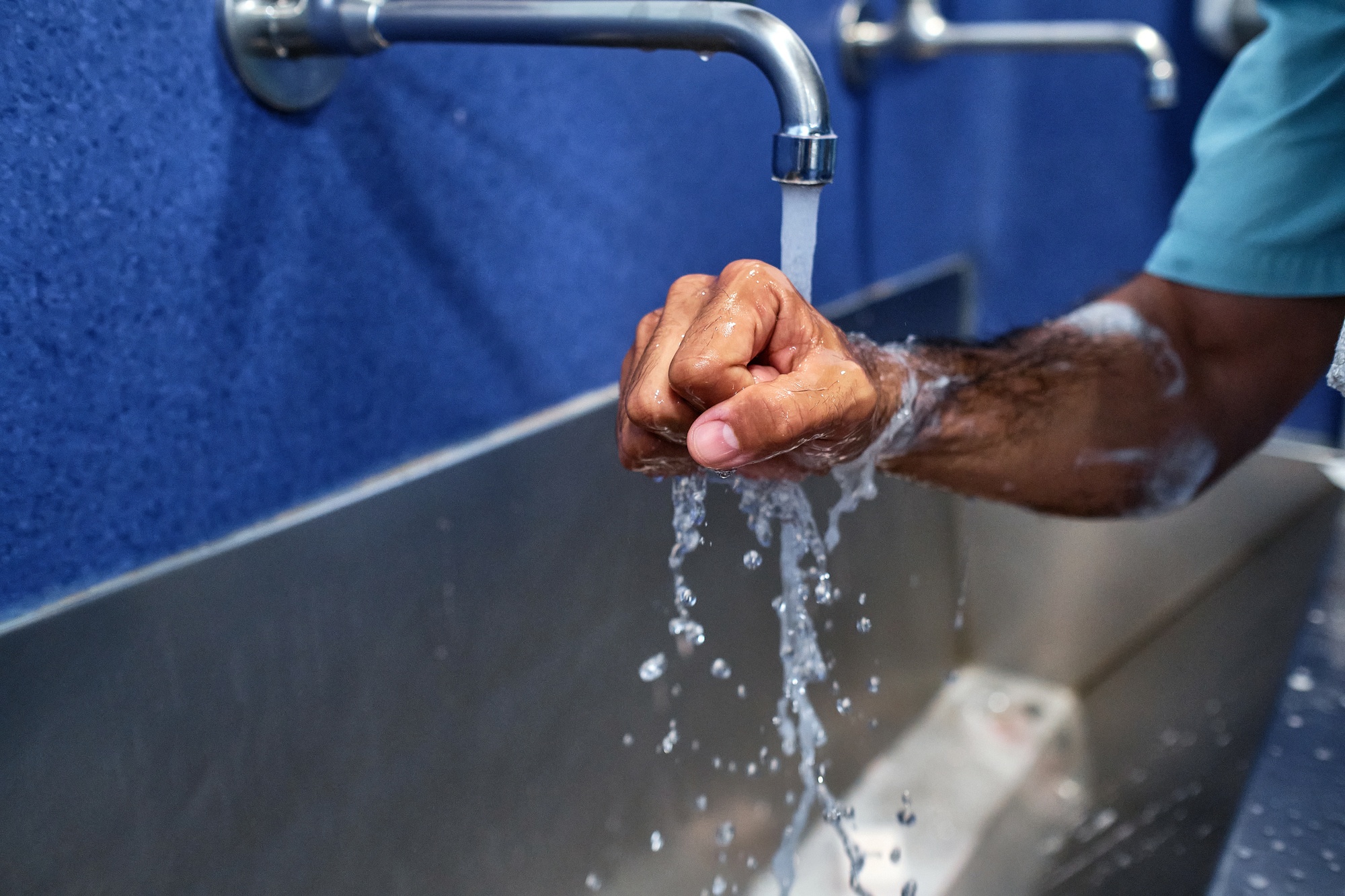
Education
FAQs About Nephros Dual-Stage Infection Control Filters
1. What is “water filtration”?
Water filtration is the removal of contaminants from water to produce drinking water that is pure enough for human consumption, or ultrapure water for various industrial and medical uses. Substances that are removed during a filtration process may include parasites such as giardia or cryptosporidium; bacteria such as Legionella; algae, viruses, fungi, various minerals (including toxic metals such as lead and copper), and man-made chemical pollutants. Many contaminants can be dangerous, but — depending on the quality standards — others are removed to improve the water’s smell, taste, and appearance.
2. Why is this important?
It is not possible to tell whether water is safe to drink just by looking at it. Simple procedures such as boiling or the use of a household charcoal filter are not sufficient for treating water from an unknown source. Even natural spring water —considered safe for all practical purposes in the 1800s—must now be tested before determining what kind of treatment is needed.
3. What are some of the harmful bio-contaminants found in a water supply?
Many bio-contaminants such as Legionella pneumophilia appear in fresh water naturally. This bacterium is responsible for legionnaire’s disease. Legionnaire’s disease is an acute lung condition that can lead to death. Legionnaire’s disease can be caused by breathing aerosolized water droplets, as may happen in a shower or from a respirator. Other bacteria such as E. Coli and Salmonella may be present in a water supply. Contaminants can also include parasites, viruses, and biological toxins such as ricin and botulin toxin.
4. Which areas of the hospital would most benefit from Point-of-Use water filtration?
ICU, Transplant, Oncology, Pediatrics, Hematology, Geriatrics, Surgical Burn units, and any areas treating patients who have a lowered immune response.
5. What does Nephros DSU remove?
The Nephros DSU is a 0.005 micron filter that eliminates all cysts, bacteria, fungi, and viruses in the water.
6. How long does it last?
The filter should last a minimum of 2 months in frequent use. It is recommended to replace the filters at standard intervals (every 2-3 months) to establish a routine maintenance schedule
7. Is there any indicator when to change the filter?
The only indication that a filter must be changed would be a substantial drop in flow rate. There is no risk of microorganisms passing through or even “growing” through the filter even at extended lengths of time because of the small pore size of the filter and the fact that it has a redundant filter stage as a safety feature.
8. What type of water outlets can the Nephros DSU be used on?
Virtually any systems with pressures up to 75 psi that will allow the filter to be introduced in-line, such as sinks, showers, ice makers, water fountains, etc.
9. Where are the filters placed for sinks?
The filters are installed under the sink on both the hot and cold water lines since water pathogens breed in both temperatures. The filter is replaced with a new filter every 2 months, (or as required based on flow rates) via quick-disconnect fittings with auto-shut-off.
10. How does the filter connect for showers?
The filters are mounted to pins on a shower slide bar and connected by flexible hose to the mixed temperature water outlet.
11. What is the benefit of Point-of-Use water filtration versus a disinfection system such as copper silver ionization?
The copper-silver ionization method is only used on hot water and has to be monitored and maintained on a monthly schedule. Also, it is generally effective against Legionella, but not all microbiological organisms. Finally it does not eliminate the biofilm and bacteria in the system, especially in dead legs or infrequently used outlets.
The Nephros DSU eliminates all water-borne pathogens for both hot and cold water at the Point-of-Use.
12. How does the filter compare to super-heating systems for disinfection?
Superheating systems once again only address a system’s hot water, leaving the cold water unprotected. In addition to burn risks, studies have demonstrated contaminant crossover at the point of delivery in superheating systems, where tepid water is delivered at the tap or shower. The Nephros DSU provides an effective contamination barrier by eliminating pathogens at the Point-of-Use.
13. Does the filter improve the taste of the water by removing chemicals?
No, that would require a carbon filter. The DSU filtering elements are hollow fibers that remove particulate (such as rust) and microorganisms.
14. What is the pressure drop of water across the filter?
The pressure drop for a new filter with 70°F water is approximated by:
ΔP (psi) = Flow rate (L/min) * 4.5
15. Do you have any independent certification of the filter?
We are currently testing to NSF P231 Microbiological Water Purifiers and expect to complete certification soon.
16. How do you dispose of used filters; is it medical waste?
Used filters should be capped and carefully discarded since presumably the inlet side contains bacteria. However, the filter can be discarded in the regular trash.
17. Why not use Chlorine?
Although Chlorine is a strong oxidant that kills many micro-organisms, it has drawbacks. As a water disinfectant in the form of hypochlorous acid, it can form a toxic gas and there is danger of a release associated with its use. A major drawback to using chlorine is that it can react with organic compounds in the water to form potentially harmful levels of the chemical by-products trihalomethanes (THMs) and haloacetic acids, both of which are carcinogenic and regulated by the U.S. Environmental Protection Agency (EPA). Although chlorine is effective in killing bacteria, it has limited effectiveness against protozoans that form cysts in water (for example, giardia lamblia and cryptosporidium, both of which are pathogenic). Chlorine can also be extremely corrosive to pipes; in old plumbing systems, high chlorine concentrations can corrode welds and cause plumbing system leaks.
18. What is cold sterilization?
Sterilization refers to the elimination of all transmissible agents (such as bacteria and viruses) from a surface, food, water, or other fluid. There are many different methods to achieve sterilization including heat, chemicals and radiation. In this case, Cold Sterilization refers to eliminating transmissible agents (biological toxins) by filtration, without the use of the other methods.
19. What does “Dual Stage” mean?
In the Nephros Dual Stage Ultrafilter there are two redundant filtration steps, or stages. Each stage removes virtually all biological contaminants. If a failure should occur in one stage, the other stage acts as a “backup” and ensures filter safety and integrity.
20. How does Dual Stage compare to other water filters?
Nephros believes that, with Dual Stage technology and 0.005 micro water filtration, we have developed the safest and the only water filter on the market that can effectively deliver Point-of-Use bio-contaminant-free water for drinking and bathing. Bacteria sizes range from 0.5 to 5 microns; viruses and other biotoxins are considerably smaller, although the vast majority of known biological toxins are larger than 0.005 microns in size.
Want to know more?
Reach out for quotes, additional product details, inventory status, installation questions and more.
